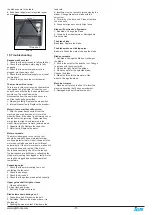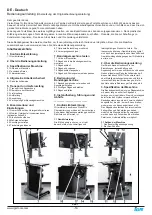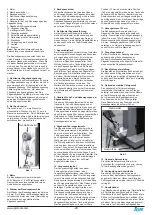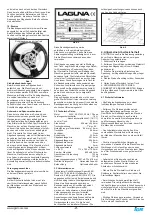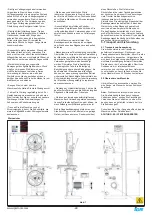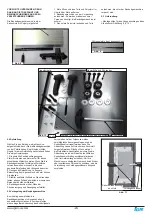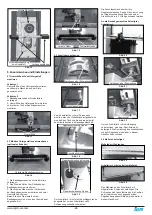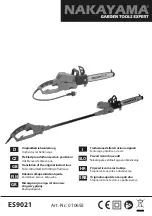
-17-
www.igmtools.com
the blade square to the table.
6. If additional adjustment is required repeat
above steps.
Pic. 79
10. Troubleshooting
Bandsaw will not start.
1. Check that the start switch is fully pulled out.
2. Check that the yellow safety plug is fully
engaged.
3. Check that the electrical power cord is
plugged into the power outlet.
4. Check that the electrical supply is on (reset
the breaker).
5. Check that you have the correct power.
The machine will not stop.
This is a very rare occurrence, as the machine
is designed to be fail-safe. If it should occur
and you cannot fix the fault, seek professional
assistance. The machine must be
disconnected from the power and never run
until the fault has been rectified.
1. Stop switch faulty. Replace the stop switch.
2. Internal breaker faulty. Replace the breaker.
Motor tries to start but will not turn.
1. With the power disconnected from the
machine, open the doors and try to turn the
wheel by hand. If the wheel is not turning, check
the reason for the jamming. Typical reasons
are: guides too tight, wood jammed in the
wheel. Adjust guides or remove jammed wood.
2. Capacitor faulty. Replace the capacitor.
3. Motor faulty. Replace the motor.
Motor overheats.
The motor is designed to run very hot, but
should it overheat it has an internal terminal
overload protector that will shut it down until the
motor has cooled down and then it will reset
automatically. If the motor overheats, wait until it
has cooled down and restart. If the motor
shuts down constantly, check for the reason.
Typical reasons are dull blade, overfeeding the
wood, motor cooling fan clogged or faulty, motor
cooling fins clogged and excessive ambient
temperature.
Squeaking noise.
1. Check that the motor cooling fan is not
contacting the fan cover.
2. Check the bearings.
3. Check the drive belt.
4. Check that the guides are adjusted correctly.
Upper guide shaft is tight or loose.
1. Clean and lubricate.
2. Adjust rack and pinion.
3. Bent rack. Replace the rack.
Blade slows down during a cut.
1. Loose drive belt. Re-tension the belt.
2. Dull blade. Replace the blade or have it re-
sharpened.
3. Feeding the wood too fast. Slow down the
feed rate.
4. Insufficient set on the teeth (wood nipping the
blade). Change blade for a blade with the
correct set.
5. Oil or dirt on the drive belt. Clean or replace
the drive belts.
6. Fence not aligned correctly. Align fence.
Blade will not track on flywheels.
1. Bad blade. Change the blade.
2. Crown on the wheels worn or damaged tire.
Dress the tires.
The blade kicks.
Bad blade. Replace the blade.
The blade makes a clicking noise.
Bad weld. Dress the weld or change the blade.
Blade overheats.
1. Dull blade. Change the blade or resharpen
the blade.
2. Pitch is too small for the depth of cut. Change
to a blade with the correct pitch.
3. Guides too tight. Adjust the guides.
4. Wood too hard for the selected blade.
Change the blade.
5. Blade too thick for the diameter of the
wheels. Change the blade.
Machine vibrates.
1. Machine not level on the floor. Re-level the
machine ensuring that it has no movement.
2. Damaged drive belt. Replace the belt.
Lock nut
Tilt stop bolt















